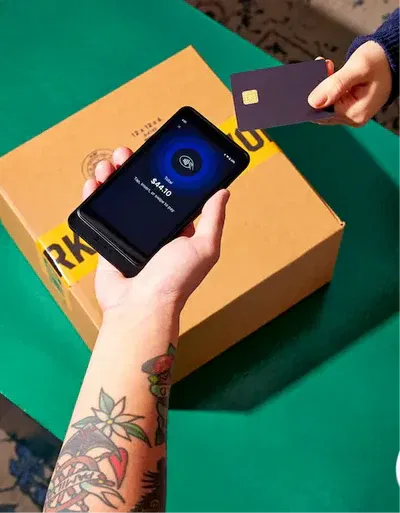Step-by-Step Guide to Build a Personal Website That Stands Out
Why You Should Build a Personal Website Today
In today’s digital world, to build a personal website is not just a hobby—it’s a strategic move. Whether you’re a student, creative professional, entrepreneur, or freelancer, your online presence matters. A personal website gives you full control over your brand, helps you connect with opportunities, and provides a platform to showcase your voice.
Many people ask, “How do I start my own private website?” or “What is the best way to create a personal page?” This article answers all that—and more.
1. Understand the Purpose Before You Build a Personal Website
Before choosing a domain or layout, ask yourself why you want to build a personal website. Your purpose shapes everything from design to content.
Questions to consider:
-
Is it for your resume or portfolio?
-
Are you showcasing your hobbies or blogging?
-
Do you want to sell services or products?
Once you identify your goal, building the rest becomes easier. For example, if you’re a freelance designer, your site should focus on visuals and testimonials. If you’re a job seeker, focus on achievements and downloadable resumes.
👉 Tip: Explore successful personal pages at Dribbble or Clarity to gather design inspiration.
2. Pick the Best Platform to Create Personal Page
There are many tools that help you make a personal website without knowing how to code. Here are the best in 2025:
| Platform | Best For | Pricing | Ease of Use | SEO Ready | Official Link |
|---|---|---|---|---|---|
| Wix | Beginners & creatives | Free to $39/month | Very Easy | ✅ Yes | wix.com |
| WordPress + Elementor | Blogs, freelancers | Free to $45/month | Moderate | ✅ Advanced | wordpress.org |
| Squarespace | Visual portfolios, artists | $16 to $49/month | Easy | ✅ Yes | squarespace.com |
| Webflow | Designers & developers | Free to $49/month | Moderate | ✅ Yes | webflow.com |
| Carrd | Simple one-page resumes | $19/year | Super Easy | Limited | carrd.co |
Most beginners prefer Wix or WordPress to build a personal website without tech overwhelm.
3. Get a Domain & Hosting Plan
Why it matters:
A domain like yourname.com instantly adds credibility. Hosting ensures your website loads fast and stays online.
Domain Tips:
-
Use
.comfor global appeal -
Avoid hyphens and hard-to-spell names
-
Register for multiple years to improve trust
Where to register:
If your platform doesn’t offer built-in hosting (like WordPress), consider:
-
Bluehost
-
SiteGround
-
HostGator
These are trusted by beginners who want to start a personal website that’s secure and speedy.
4. Design the Website: Make It Yours
When you make a personal website, the design should reflect your personality, profession, and goals.
Must-have sections:
-
Home: A compelling intro with your photo
-
About: Tell your story
-
Portfolio or Blog: Show your work
-
Contact: Form + social links
-
Resume: Downloadable PDF or link to LinkedIn
Design Tips:
-
Keep it mobile-friendly
-
Use 2–3 colors max
-
Stick to 1 or 2 fonts
-
Avoid clutter
📌 Use tools like Canva for graphics and Unsplash for royalty-free images.
5. Add Valuable Content to Build Trust
The best way to stand out is through high-quality, authentic content. When creating a personal website, think like your visitor—what will they want to know?
Examples of strong content:
-
A “Why I Do What I Do” section
-
Case studies of past projects
-
Blog posts on industry trends or personal growth
-
Video introductions
This not only boosts SEO but also helps people connect with you. Try including real photos and anecdotes to humanize your page.
6. Optimize Your Website for SEO
SEO is critical if you want people to actually find your site.
SEO Checklist:
-
Use the exact keyword “build a personal website” in titles and headers
-
Include secondary keywords like “create personal page” and “start a personal website”
-
Add internal links (to your blog, resume, etc.)
-
Link out to helpful resources (like Google Search Console)
📈 Tools to help:
-
Yoast SEO (WordPress)
-
RankMath
-
Ahrefs Webmaster Tools
Search engines love clean, fast, mobile-optimized websites—exactly what you’re building.
7. Make It Secure & Maintainable
Once you make a personal website, keeping it secure and up-to-date protects your content and reputation.
Security Tips:
-
Use HTTPS (SSL certificate)
-
Backup your site weekly
-
Avoid shady plugins or themes
-
Use 2FA for admin logins
If you’re using WordPress, plugins like Wordfence and Jetpack help a lot. Hosting providers like Bluehost often include daily backups and free SSL.
8. Promote It Everywhere
Creating your site is just step one. Promotion is where the magic happens.
How to promote:
-
Add it to your email signature
-
Share on LinkedIn, Twitter, Reddit
-
Submit it to online directories
-
Join niche communities (e.g., Indie Hackers, Hashnode)
-
Publish guest posts that link to your site
Your goal is to drive traffic to your site and convert it into opportunity—whether that’s a new job, client, or connection.
9. Frequently Asked Questions About Building a Personal Website
Q1. How much does it cost to build a personal website?
It can range from free to $100/year. Platforms like Wix and WordPress offer free versions, while custom domains and hosting can cost $10–$45 per year.
Q2. Do I need to know how to code?
Not at all. Tools like Wix, Squarespace, and WordPress Elementor let you create without code. But learning HTML/CSS can give you an edge.
Q3. How do I start my own private website?
Buy a domain, pick a builder (like WordPress), add content, and publish. To keep it private, don’t index it on search engines or protect it with a password.
Q4. What’s better—Wix or WordPress?
Wix is simpler; WordPress is more flexible. If you’re just starting, go with Wix. For long-term growth, WordPress wins.
Q5. Can I create a personal page for job applications?
Absolutely. A personal site impresses recruiters and gives you more control than LinkedIn alone.
Q6. How do I make a personal website show up on Google?
Submit your site to Google Search Console, use keywords like build a personal website, add meta descriptions, and build backlinks.
Q7. Is it better to blog or just have a portfolio?
Why not both? Blogging drives traffic, while a portfolio proves your skills.
Q8. What’s the best layout for a personal website?
Simple, clean, mobile-friendly designs with a homepage, about, portfolio/blog, and contact form.
Q9. Can I monetize my personal website?
Yes! Add affiliate links, sell products or services, or even launch a course.
Q10. Should I add social media links?
Yes—but only the ones that align with your brand (e.g., LinkedIn, GitHub, Twitter).
Q11. How do I create a personal website with my own domain?
Register a domain, choose a platform, and connect it. Most builders like Wix and Squarespace have step-by-step guides.
Q12. Can I make a personal website on mobile?
Some builders like Wix and Carrd offer mobile apps, but it’s easier on desktop.
Q13. What if I want to redesign it later?
That’s the beauty of owning it—you can update or redesign it anytime.
Q14. Do I need a blog?
Not required, but it’s a great way to build authority and improve SEO.
Q15. Can I include a resume download?
Definitely. Make sure it’s up to date and easy to access.
Conclusion: It’s Time to Build a Personal Website That Works for You
To build a personal website in 2025 is to take control of your digital identity. Whether you’re showcasing your skills, building a blog, or connecting with others, your website is the home base of your brand.
With the tools, platforms, and tips shared in this guide, you can confidently create a personal page that reflects who you are and what you stand for.
So what are you waiting for? Choose a platform, claim your domain, and start building. Your future self will thank you.




